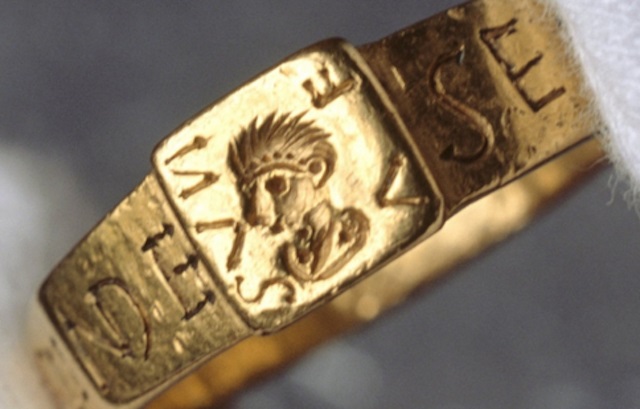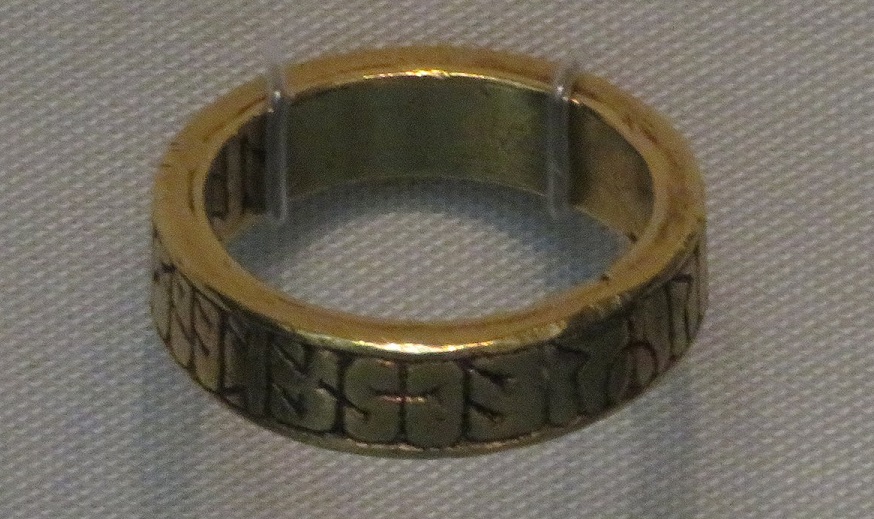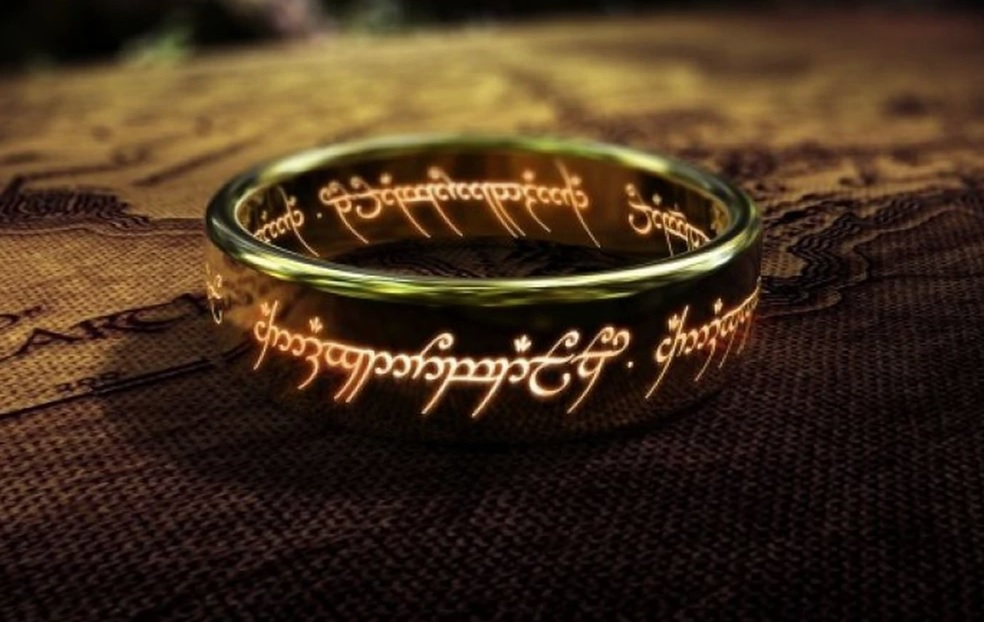Curious Trinkets And Powerful Artifacts: Magic Rings Of History And Myth
Some time ago, when I was doing these "gaming meets history" articles (like this one, this one, and this one) more regularly, we asked on the F2P Cast if there was any topic people would like to see me tackle next. One of our viewers – I think it was ElusiveXTreasure – asked about magic rings, specifically their historical origins, if any, and why people would think they would bestow powers.
I went to work right away on that article, but unlike with my other pieces, I couldn't find the definitive history of magic rings and their origins. I got frustrated and let the article languish on my hard drive for a long time. A couple of weeks ago, though, I was trying to think of something to write and came back to the concept. In doing so, I thought again about the rings article and decided that I had taken the wrong approach. It would be next to impossible to definitively prove who “made” the first magic ring, and I had come up with a few historical references to them, so why not just use those and present the article as a description of the concept, along with those few historical references? I'd already researched a decent amount of material, so I should just be able to add a few more details and spiffy it up for a quick fix!
Now I just needed to find the original article from two years ago … search … search … search …
Oh crud, I think I deleted it. And whatever bookmarks I may have been using.
Well, time to start from scratch.
Of shepherds and gods
Tales of magical rings date back to antiquity, and probably even before recorded history. Plato's Republic (c. 375 B.C.) mentions the Ring of Gyges, which confers invisibility on its wearer and poses the moral question of whether a person with such a power would misuse it for ill deeds. Indeed, the character who discovers the ring, a shepherd named Gyges, was sent to the court of the king of Lydia to submit his and his fellows' monthly report. Upon reaching the court, he used the ring to become invisible and
"he seduced the queen, and with her help conspired against the king and slew him, and took the kingdom."
Fair to say that if there was a moral test to be had, Gyges failed it completely.
[caption id="attachment_119931" align="aligncenter" width="640"] One crafter's interpretation of the Ring of Gyges[/caption]
One crafter's interpretation of the Ring of Gyges[/caption]
Norse mythology had no lack of magical trinkets used by the gods and mortals alike. Draupnir was the gold ring worn by Odin, which, every ninth night, duplicated itself by creating eight perfect copies; you'd think that Asgard would have been swimming in gold rings before too long. Andvaranaut was another magic ring that could find gold but was cursed by its original owner, Andvari, to bring misfortune on its wearer after Loki stole it from him.
Those are some rousing fictional tales about magical rings, as is this one better known to modern audiences, but what about magical rings actually known – or believed to be known – in history?
A cure for all that ails you
As with any kind of “quick cure” in more recent history – wonder drugs, crystals, fad diets, and so on – magic rings were long peddled as an easy remedy for whatever ailed you or to protect you from harm. Why work to achieve your goals when, for just a few coins, you can put a ring on your finger and all your problems will be solved? It's a tradition that still lives on today; just do a Google search for “magic rings” and, once you get past the gaming references, you'll find plenty of websites peddling "real magic rings," "black magic rings" and even advice for prospective buyers.
While most online searches for “create magic ring” will yield simple arts and crafts projects, with no real intention for the final product to house mystical powers, folks used to take matters more seriously. The 10th or 11th century Book of the Treasure of Alexander gives detailed instructions for how to craft magic rings, one representing each of the known planets, as well as the Sun and Moon. One who holds the Ring of Saturn "will cause his enemies to fear him and he will be respected by the populace and he will be without challengers due to their fear of him."
To create it, you need to wait until Saturn is in a certain position in the sky and then make a ring “of one ounce of lead with a square signet” with the “image of an old man wearing a helmet and riding a black horse. He is holding in his left hand a sword raised above his head and on his left he holds a shield. Anoint the signet with the blood of a black ox.” At least the recipe doesn't skimp on details.
The real(?) thing
As far as "actual" magic rings go, several have been found in England dating to the ninth and 10th centuries. One, discovered in 1817 in Kingmoor, is engraved with runes that say … well, linguists aren't quite sure what they say. No, it wasn't "One Ring to bind them" but likely something more practical. Related texts seem to indicate that it may have been prescribed to prevent bleeding.
(Humorously, at least from the standpoint of an editor, is the fact that the Kingmoor Ring has 30 runes: 27 etched on the outside and three on the inside. One source believes this is because it copied its inscription from another, slightly larger ring, but didn't have the same space to include all 30 runes on the exterior. Oh, what some Anglo-Saxon ringsmith wouldn't have given for a word processor!)
[caption id="attachment_119919" align="aligncenter" width="874"] The Kingmoor Ring, bad typesetting and all (source: Wikipedia user BabelStone)[/caption]
The Kingmoor Ring, bad typesetting and all (source: Wikipedia user BabelStone)[/caption]
In the mid-1800s, antiquarian Thomas Crofton Croker produced a lengthy and detailed description of over 200 pieces of jewelry, mostly rings, found in the collection of one Lady Londesborough. His descriptions, with some illustrations, would make for an invaluable research for anyone attempting to come up with magical rings for their own works of fiction, or an RPG campaign. While many were probably no more than simple treasures to their original owners, some were likely endowed with purported magical properties.
Of note:
Entry #14, a cameo ring engraved with two cockatrices, a legendary bird that sprang from the egg of a cock. (Get your minds out of the gutter – that's just a male chicken.) Croker described it as "probably Egyptian, and was worn as a talisman against 'the evil eye.'"
Entries #27 and #30, toad stone rings. "It was currently supposed, in the time of Shakespeare, that every toad had a stone contained within its head, which was a sovereign remedy for many disorders."
Entry #39, a fanciful ring with an engraved word that is a charm against epilepsy.
Entry #53, engraved with an image of St. Christopher that was "worn on the person as an amulet against sudden death – particularly by drowning."
[caption id="attachment_119923" align="aligncenter" width="471"] Source: Catalog of a Collection of Ancient and Medieval Rings and Personal Ornaments (Thomas Crofton Croker, 1850s)[/caption]
Source: Catalog of a Collection of Ancient and Medieval Rings and Personal Ornaments (Thomas Crofton Croker, 1850s)[/caption]
Even great rulers weren't immune to the prospects offered by magical rings and other talismans. Charles V of France, who reigned from 1364 to 1380, had in his possession "a stone, set in gold that cures gout. A king is carved on one side and Hebrew letters on the other." That passage comes from Claude Lecouteux's The High Magic of Talismans and Amulets: Tradition and Craft, which also mentions several nobles having talismans that purportedly protected them from poisoning – a common fear, as any Crusader Kings player knows.
As Lecouteux puts it, documenting everything that was ever purported to be a magic ring (or other trinket) "would demand a lifetime," so I'll leave you here with these few examples for now. The next time you equip a magic ring in a game, maybe think back to the ancient Greeks or Norse – or likely someone far older than them – who first came up with the concept. Just don't buy one off someone's Etsy shop and expect it to protect you from COVID-19.
About the Author

Jason Winter is a veteran gaming journalist, he brings a wide range of experience to MMOBomb, including two years with Beckett Media where he served as the editor of the leading gaming magazine Massive Online Gamer. He has also written professionally for several gaming websites.
More Stories by Jason WinterRead Next

Win 1 of 55 Star Trek Online: Klingon Packs Keys To celebrate the launch of Star Trek Online’s new PC update, House Shattered, Perfect World Entertainment has granted MMOBomb 5 codes for the Klingon Dahar Master Faction Pack an...
You May Enjoy

Here's your summer plans.

If you like them, now’s the time to add Oraxia to your roster.

This year’s grand prize is the Federation Intel Holoship.

A "split-rendering" game system and a world shaped by the players.

the guy who took the castle and kingdom just visited her in the night and then assassinated the king by poisoning him in his sleep ( made up) maybe he was the first ninja. :) The other dude with the dupe ring he just showed everyone in town and then someone made copies of his ring because they never liked him and the whole town had one, so therefore he believed he thought his ring could multiply. boom boom! lol
good research though :)